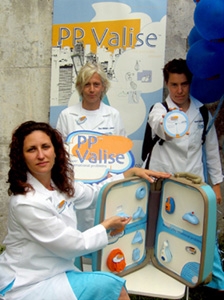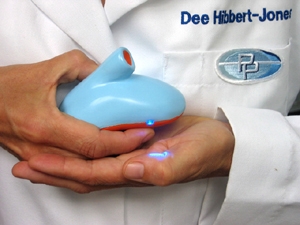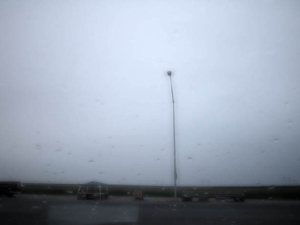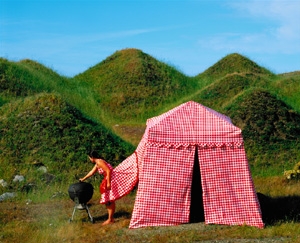Feature: Essays
Here, There, Everywhere
Socially engaged art practice has emerged as one of the most pervasive, complex, and psychologically revealing trends of the 21st century. The expansiveness of methodologies that encourage interpersonal exchange, the physical and conceptual blurring of boundaries, and interventionist methods of addressing power and its dysfunctions in the contemporary world are central to this global artistic current.
While the persistent metamorphosis of artistic vision has always been tied to the social and cultural zeitgiest, from the perspective of our time, it reflects the theoretical and deconstructive practices of postmodernism, the vast implications of globalization, and artistic trespass into such venues as the shopping mall and the internet. These latter territories have become particularly significant, as they have the potential to satisfy social and cultural needs, and to continue the projects of reframing and reiterating our perceptions of exhibition space and blurring the gap between art and life.
In Society of the Spectacle, Situationist theorist Guy Debord was prophetic when he warned of the dangers of capitalist society and the threat of culture becoming the ultimate commodity. Two primary strategies developed by the Situationists—detourné (the rearranging of prevalent sign systems to produce new meanings) and derivé (walking without a goal)—have had great bearing on recent artistic processes. These approaches have influenced artistic engagement with the internet, one of the most significant contemporary sites of social engagement and spectacle. The internet and public places share an identity as “the street,” and the rapid growth of on-line art venues has created natural meeting and exhibition spaces. These sites have provided easy means for artists to expand their potential to exchange ideas, and to engage with audiences of vast dimension and character. This essay and allied project examine the work of certain Bay Area artists who are interested in this potential and are working in this capacity; who have entered the territory of spectacle. As Nato Thompson describes in his essay for The Interventionists: Art in the Social Sphere (MASS MoCA, 2004), “the spectacle is a territory. The city is a spectacle…(artists) must cross into the territory of others…to produce new meanings.”
Among the artists working in this realm are the artist-team Dee Hibbert-Jones, Elyse Hochstadt, and Nomi Talisman, whose project Psychological Prosthetics is designed to investigate the art world through the lens of commerce, mental health, and contemporary design. Their multitiered piece features a line of sculptural “products” intended to soothe such mental health disorders as shyness, anxiety, or loss, and the work is realized through exhibitions, performances, traveling installations, infomercials, and a web site. Satirical, serious, ambiguous and multilayered, Psychological Prosthetics imitates the language of product design, branding, and advertising as means to spoof the marketing industries surrounding mental health; to offer wry commentary on consumerism; and to deconstruct the role of the artist and the social function of an artwork.
At the core of this project is PP Valise, a hip, molded plastic Duchamp-style suitcase. Mounted and displayed in PP Valise are the artist-designed blobject products, hand-sized and fabricated from smooth, baby blue rubber; intended to be physically experienced. For instance, organically shaped PP Loss is designed to be laid on one’s chest, where it is meant to provide comfort by mechanically “breathing” in tandem with the user. Others, including PP Depression, PP Anxiety, and PP Shyness, are designed to entice the viewer as fetish-like commodity objects that have the promise to heal psychological and emotional ills. The artists reinforce the pseudo-mental health persona of the objects by incorporating them into performances where they assume the roles of salespeople, researchers, and nurses. To complete their trespass, the artists wear white lab coats with the embroidered project insignia; distribute product samples (pens, balloons, coasters); and offer on-site demonstrations and personal consultations. This summer, Hibbert-Jones and Talisman are using PP Valise to perform their medicine man-style interventions in a number of European countries including England, Germany, France, and Switzerland, as well as Israel and Canada.
click here to view PPValise Videos
One of the most moving facets of this multifaceted project is its very personal and emotional core. Once the artists have completed a public demonstration of PP Valise and its contents, they ask spectators to fill out a questionnaire relevant to its emotional content, and spend time talking with visitors while still in costumes and in character. The artists have adapted a very consciously personal, Beuys-like style, with the intention to contradict the commerce and commodification of mental illness, as well as to further explore the societal and functional roles of art and artists.
Through their incorporation of detourné and derivé methodologies, the inherently nomadic structure of PP Valise has enabled Hibbert-Jones, Hochstadt, and Talisman to effectively infiltrate the existing social and cultural forums; to trespass. Its itinerant nature characterizes numerous works in progress, including I-5 Passing, a project of Bay Area artist Christiane Robbins. For I-5 Passing, Robbins has combined the seduction of the road trip, and actual, fictional, and constructed images, with recombined data and media technologies. Robbins’ project grew out of her recognition of the unprecedented urban/suburban sprawl into California’s once-predominantly rural landscape, which she experiences as a communter, traveling Interstate Highway 5 between her San Francisco home and Los Angeles teaching job. She became intrigued with the profound ordinariness of the scenery and the generic character of the communities and business that have come to populate this transit corridor, and realized how this ordinariness unleashes a flood of nostalgia (as in the Motel 6 “we’ll keep the light on for ya” witticism) for a past we have never really known. The subversiveness of Robbins’ artistic investigations comes with her recognition of the profound impact of the automobile, and wireless and locative technologies on this historically inconspicuous milieu, and the inevitable changes they are making on its face and future. In keeping with these oddly entwined characteristics, DVDs will be available for purchase at food marts along the I-5 corridor that feature images Robbins has shot at freeway exits and a sound track recorded off available radio stations along the way.
As part of her I-5 project, Robbins has also created an interactive piece that captures traces of our fleeting corporeal and artistic presence. Titled Call Box, the work comprises transmission stations located at certain CalTrans call boxes situation along the freeway between the Bay Area and Los Angeles. As viewers/listeners proceed through this corridor, away from one call box and toward the next, they will trigger and receive a multiplicity of narratives via FM radio, contributed by artists, writers, and media makers throughout the state. The collaborative soundscape will become a collective portrait of the transitory and permanent inhabitants of the I-5 corridor. The project is a reminder of the unquestioned presence of computer technologies and systems in our lives, and the way in which they mirror the endless reproductions of the banal topographies—suburbs, malls, symbol systems—of the world we speed through.
Robbins’ interest in the personal narratives that underlie the endless movement of individuals and information through quintessentially prosaic landscapes has counterpoint in Robin Lasser’s and Adrienne Pao’s Dress Tents project, which examines the nomadic nature of contemporary life, land politics, and tourism by questioning notions of leisure associated with them. The Dress Tents are unique in that they are intended to be “performed” as worn garments that morph into sculptural structures that also house their wearers bodies. For instance, in the Muumuu Dress Tent (2004), beachgoers can use the structure to conceal their bodies while undressing. There is an inherent irony in the historical creation of the muumuu by missionaries in the 1800s as means to hide the bodies of Native Hawaiian women, transformed into a garment/structure into which a visitor can enter to “change.” Performed in public places, the piece activates and responds to the spaces and communities in which it is located. As the artists explain, when they premiered Missionary Muumuu Dress Tent at Kailua Beach, Oahu, (2004), it enabled a dialogue with visitors about the gendered implications of the muumuu, and its relationship to the history of the Hawaiian islands. Lasser and Pao are performing the dress tents this summer in Honolulu, where they will again address notions of leisure linked with tourism in the Hawaiian islands, the need people have to experience leisure in a tropical place, and the impact this has on locals whose economies are dependent on this industry.
The artists’ creation of special fashions as a central component of this work also creates a type of camouflage, which serves as a useful tool for the purposes of trespassing. As Nato Thompson describes, “We can recognize these practices as "art-inspired’ because they manipulate visual and spatial codes in order to produce criticality.” Just as Hibbert-Jones, Talisman and Hochstadt have deployed costumes as one means to parody the mental health industry, Lasser and Pao’s Dress Tents emulate and poke fun at the recreational fashion industry. Both play with and comment on the dualities structured by the performed simulacrum of the industries they lampoon. Of great significance for each is their incorporation of humor as means to urge audiences to reconsider the critical social issues at the heart of their projects, a characteristic for which Robbins also strives through her own distinctive means.
The contradictions inherent in these projects reveal each artist’s concern with the missing parts of contemporary life, and speak to the human need and desire to create artificial substitutes for them. While each has responded to these circumstances by creating unique sets of artistic prosthetic devices and situations, the deeper issues of social and cultural amputation and dislocation they address are deeply disturbing commentary on our time.




